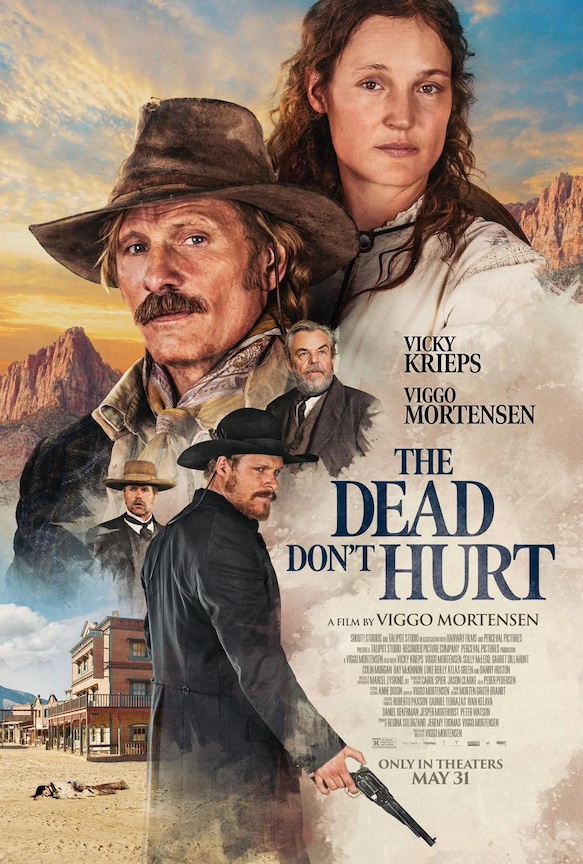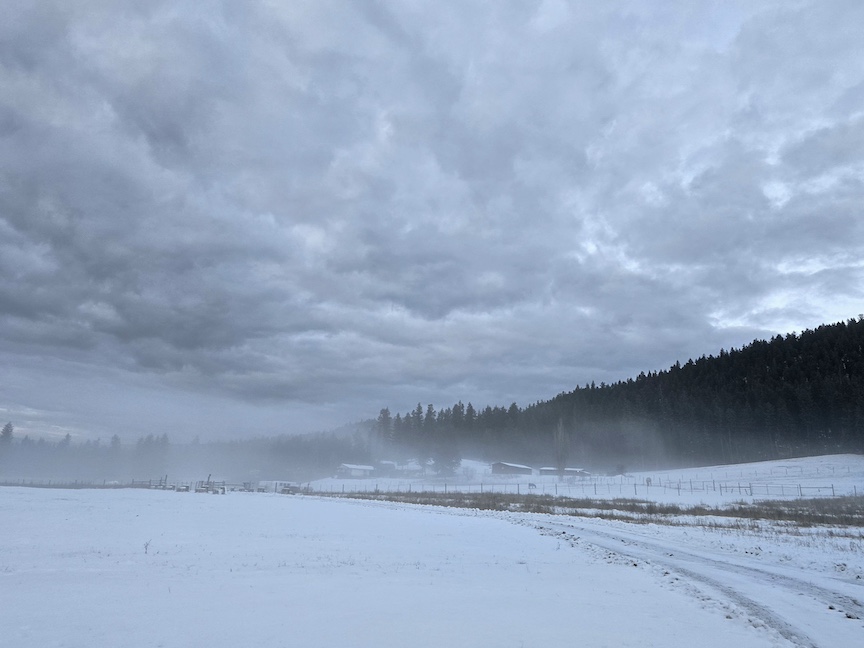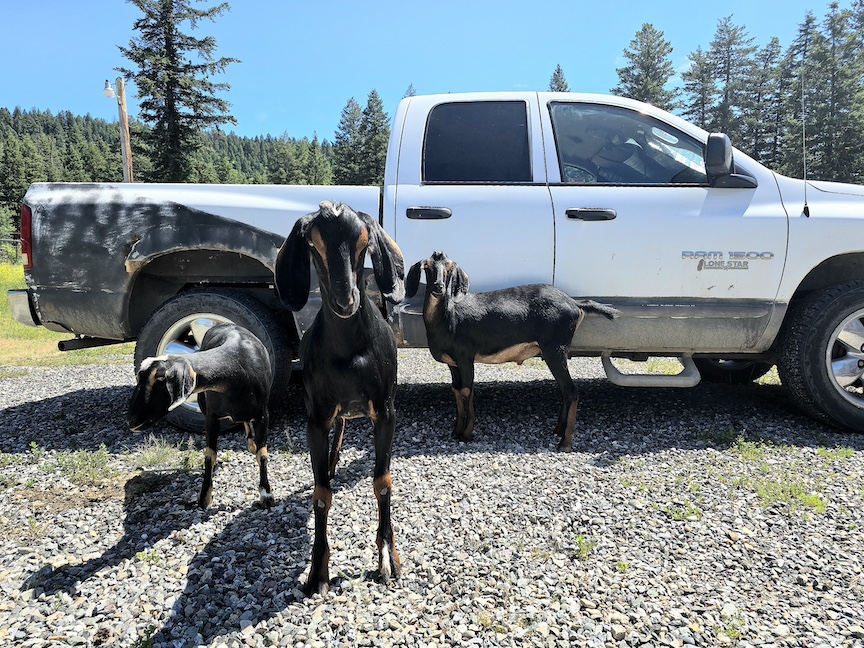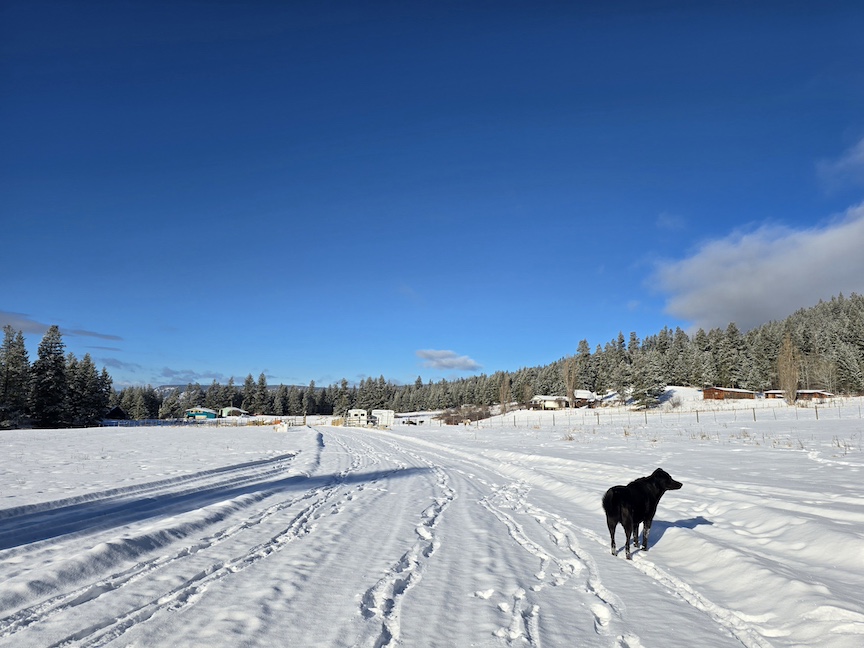Starring: Vicky Krieps, Viggo Mortensen, Solly McLeod, Danny Huston, Garrett Dillahunt
Director: Viggo Mortensen
Released: 2023
Mood: If you’re tired of the reboots and remakes and general sameness of everything these days and are desperate for a sign that people are still creating things that are new and fresh and actually have a purpose.
Hollywood has delivered some fine-ass Westerns over the last few years, but nothing I’ve seen even comes close to The Dead Don’t Hurt. And maybe that’s because almost no part of this movie is actually associated with Hollywood.
- It was filmed primarily in Canada, with some scenes shot in Mexico
- The co-producers are Viggo Mortensen (USA), Regina Solórzano (Mexico), and Jeremy Thomas (London)
- Although Mortensen’s studio, Perceval Pictures, is located in California, it’s technically a Danish company
Mortensen produced, directed, wrote, and co-starred, AND he composed the score. That is an insane amount of time and energy to put into one movie, but holy crap, did it ever pay off.
- Fun Fact #1: Aragorn’s sword from The Lord of the Rings: The Return of the King, which Peter Jackson gave Mortensen, can be spotted at the end of the movie.
The Dead Don’t Hurt is unlike any other Western out there. It’s got a few flaws, but there is so much to appreciate in the cinematography and storytelling that it’s absolutely not to be missed. Spoilers ahead.

The Dead Don’t Hurt takes place in the 1860s, and ranges from San Francisco to Nevada and eventually back to California. It’s a little bit about immigrants, and the Civil war, and the trials of frontier life. But more than anything, it’s about love and life and how neither is fair, but you can’t give up because you might get to experience a few more great things before you die.
Brave, unapologetic French Canadian Vivienne Le Coudy (Vicky Krieps) meets Danish carpenter Holger Olsen on the docks in San Francisco. Their chemistry is so immediately palpable that it makes you giddy for these two people you’ve only just met on screen. Vivienne ditches a rich art collector and departs with Holger to his cabin in a desolate part of northern Nevada.
But it’s not long before Holger gets the itch to sign up for the Union Army, and leaves Vivienne behind to go see what it’s all about. While he’s gone, the violent, entitled son of a wealthy local landowner takes a shine to Vivienne, and unsurprisingly, doesn’t give a f*ck about consent.
Vivienne has to choose between walking away and starting over yet again, or standing tall and pushing forward.
![]()
Although that summary seems pretty straightforward, The Dead Don’t Hurt is told in a non-linear style that I fully admit confused me. I had to rewatch the first 20 minutes right after finishing the movie, to understand what actually happened.
- Fun Fact #2: After shooting had wrapped, Mortensen did an edit in an entirely linear format to see if it would be better. But he ultimately chose to stick with this style.
To be fair, I’m painfully unobservant and usually at least a bit distracted. Other people might grasp the interweaving of past and present events right away. I just didn’t get there until about halfway through, and only because I finally paused to look up why Holger had a son, then didn’t, then did, and why he seemed to be taking his kid to war with him.
But I still enjoyed every single moment of the acting and the breathtaking camera work. This is the most stunning, gorgeously shot movie of any genre that I have seen in as long as I can remember. I’d heard that it was good, but trust me when I say that words don’t do it justice.
In the opening gunfight, clouds of dust are lit in a way that can only be described as pure art. And that level of detail carries right through to the end. Director of photography Marcel Zyskind makes every single shot, from action to landscapes to quiet personal shots, feel carefully considered and treated like it’s THE moment.
This pairs perfectly with the slow, intimate narrative devoted almost entirely to its female protagonist.
Mortensen told Salon, “Their stories are untold, just like the stories of little girls and women whose sons or brothers or fathers or partners go off to war, as happens in this story. We don’t usually stay with them. What happens to them? What are the consequences? What goes through their minds? And what do they have to deal with?”
The Dead Don’t Hurt is slower than most Westerns I’ve seen, front-loading the action at the start of the film and then easing off into a quieter, more dialogue-driven style. It makes everything feel real – sometimes way too real. Don’t hold your breath for a happy ending.
![]()
The stellar performances in The Dead Don’t Hurt are the other reason that this movie is on a whole other level.
Vicky Krieps is PHENOMENAL as Vivienne. Truly outstanding, one of the best women in Westerns that I’ve ever seen. Her performance has such vast range – from quirky to angry, playful to broken, blunt to romantic to nurturing.
She looks the part, and she brings an indefinable authenticity to the character that I can’t imagine in the hands of anyone else. The way she plays Vivienne’s pain cuts you deeply, and her tenacity fills you with hope. It’s one of those rare masterclasses in acting, which you don’t get too often in a Western.
Viggo Mortensen is stoic but sweet as Holger, with a raggedy yet pleasingly dense moustache that’s like the hardscrabble older sibling of his cookie duster in Appaloosa.
I did want a bit more of Holger’s backstory, to understand his motivations – like WHY did he leave his happy new life to go to war? It didn’t make sense. But Mortensen definitely brings a warmth to the character that is crucial to their chemistry.
- Fun Fact #3: Another actor was originally cast in the part, but dropped out early in production and apparently Krieps suggested Mortensen step in. As the script’s author, he was able to rewrite the lead role to suit himself, including making him older and Danish.
Every single other actor is also highly watchable, fully embodying their characters. And super-mega-bonus – you get to see FOUR Deadwood actors reunited by the 47-minute mark, which I obviously noted because Deadwood is still unmatched in Western TV.
- Solly McLeod adds a few extra levels to the despicable, piece of shit, syphilis-ridden psychopath Weston Jeffries, although I also craved any kind of backstory to ground his character, too
- Danny Huston gives us yet another unique Western character, this time elegant and refined as the shady mayor
- Garrett Dillahunt as Alfred Jeffries has the finest moustache in the movie, and as always he fits perfectly into the era through his physicality
- W. Earl Brown is at home behind another saloon bar, this time playing an even more whipped subordinate as Alan Kendall
- Ray McKinnon makes a short but commanding early appearance as Judge Blagden
- William Sanderson also makes a super brief cameo early on, giving you the second of the four Deadwood sightings
![]()
“The dead don’t hurt” is a line from the movie, by which Holger explains to his son that a bird he shot and killed isn’t in pain.
This theme neatly explains Holger’s decision to leave Weston alive but doomed to die a slow, painful death, because he deserves to hurt for as long as possible. It also gently suggests that Vivienne is freed from pain.
I’ve seen a lot of complaints online about how the French Canadian, Spanish, and Danish scenes don’t have subtitles. This was apparently an intentional choice by Mortensen. I got a bit stuck in the first flashback to Vivienne’s childhood, when everyone was speaking French, because I assumed something was broken. But once I confirmed that it was on purpose, I got over it. Look, I don’t understand everything they say in the high-Victorian dialogue of Deadwood, either, but you can pick up a lot from body language and other visual cues if you actually try.
The reality is that a LOT of people didn’t speak English back then, so not understanding what others are saying is giving you an authentic pioneer experience.
The Dead Don’t Hurt is often sweet but also incredibly sad. Almost all of the good guys die at the hands of the bad guys. It really showcases how the 1% have always been crushing everyone else. But wow, what a visual masterpiece.
I will suffer the sadness to watch this movie many more times.


